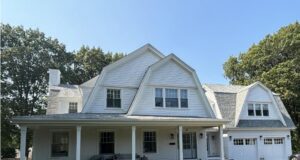NYU Furman Center Launches CoreData.nyc, a Hub for New York City’s Housing and Neighborhood Data
New York, NY – (RealEstateRama) — The NYU Furman Center announced the launch of CoreData.nyc, a new online hub for New York City housing and neighborhood data. CoreData.nyc standardizes datasets from a variety of city, state, and federal sources to present over 100 indicators describing New York City’s housing and neighborhoods. It is the city’s most comprehensive resource for property-level subsidized housing information.

CoreData.nyc is both an update and an expansion of the NYU Furman Center’s Subsidized Housing Information Project (SHIP), which launched in 2011. As with SHIP, CoreData.nyc allows users to search for currently subsidized properties in the city and identify properties at risk of exiting from affordability restrictions. CoreData.nyc also includes neighborhood-level information on housing markets, home affordability, land use, demographics, and neighborhood conditions.
CoreData.nyc also features independent analysis by NYU Furman Center researchers, including new data analysis presented along with interactive maps. New findings released today include:
- Expiring Affordable Housing in New York City: By 2020, the regulatory agreements governing 157 federally subsidized residential properties in New York City are set to expire; over the following decade, another 593 are set to expire. View the map>>
- Newly Constructed Housing Units on the Rise in 2015: Between 2014 and 2015, New York City saw a 7% increase in the number of completed residential units authorized for occupancy, marking the third straight year of gains. View the map>>
“We are excited to launch this tool that makes important data about the city’s subsidized housing and neighborhoods available and easy to explore and use for the public,” said Jessica Yager, Executive Director of the NYU Furman Center. “CoreData.nyc would not be possible without the support of New York City Council, as well as the partnership of our many data providers in city, state, and federal government.”
CoreData.nyc is a free, publicly available resource. Users can create maps, download tables, and track trends over time. The tool was funded by New York City Council, with additional support from Capital One, and developed by Applied Geographics. CoreData.nyc is maintained and updated regularly by the NYU Furman Center. Those wishing to learn more about how to use CoreData.nyc may sign up to participate in a free webinar training (12/14/16 from 1:00-2:00 p.m. EST) or join the NYU Furman Center’s mailing list to receive updates.
The NYU Furman Center is one of the nation’s leading research centers on housing, neighborhoods, and urban policy. Established in 1995, it is a joint center of the New York University School of Law and the Robert F. Wagner Graduate School of Public Service, and received the prestigious MacArthur Award for Creative and Effective Institutions in 2012.
See below for statements from government officials and new data highlights.
# # #
Webinar Briefing: December 14th, 2016, 1:00-2:00 p.m. EST | Register
NYU Furman Center will present a webinar briefing on CoreData.nyc to provide an overview of the site’s data resources and functionality. In the meantime, users can explore the CoreData.nyc User Guide.
Receive CoreData.nyc Updates
To stay up to date on CoreData.nyc, including notifications about new datasets, join our CoreData.nyc mailing list.
Media Contact
Shannon Moriarty, , 212-998-6492
# # #
Statements
1. Melissa Mark-Viverito, Speaker of the New York City Council
“Investing in CoreData.nyc means that Council Members across the five boroughs will now be able to actively engage in tracking and preserving affordable housing units throughout their districts,” said City Council Speaker Melissa Mark-Viverito. “This will provide increased transparency in the complex landscape of affordable housing in New York City, and be a crucial resource for the staff and task forces that we rely on to make recommendations for agreements and restrictions affecting future supply.”
2. Vicki Been, Commissioner, NYC Department of Housing Preservation and Development
“Quality data is essential to understanding the challenges and opportunities we face as a City and shaping sound urban policy,” said New York City Department of Housing Preservation and Development Commissioner Vicki Been. “NYU Furman Center’s new CoreData.nyc provides New Yorkers with a robust, user-friendly tool for accessing comprehensive, up-to-date information about their neighborhoods and housing.”
3. Eric Enderlin, President, Housing Development Corporation
“Affordable housing is one of the great challenges of our city and our time. As with any challenge, it must be understood before it can be met and that requires access to information,” said Eric Enderlin, President of the Housing Development Corporation. “I commend the NYU Furman Center on the launch of a tool which will be used to organize that information, analyze the challenge, and inform new ideas and solutions.”
4. James Rubin, Commissioner, NYS Homes and Community Renewal
“All well-considered public policy–and the public discourse that helps to shape it–relies on data that is accessible, understandable and easy to use. CoreData.nyc provides a unique, comprehensive way to look at New York City’s housing stock, conditions and status from 30,000 feet up all the way down to the block and lot level,” said NYS Homes and Community Renewal Commissioner James S. Rubin. “For years, the NYU Furman Center has supplied essential and sometimes surprising information on the population and neighborhood trends that help us work together to guide reasonable, responsible and rational development and affordable housing preservation programs that benefit New Yorkers.”
5. Holly Leicht, Regional Administrator, U.S. Department of Housing and Urban Development
“CoreData.nyc gets us closer to the NYU Furman Center’s ambitious objective of making New York’s labyrinth of housing programs and opportunities readily navigable,” said Holly Leicht, HUD Regional Administration for New York and New Jersey. “With this powerful new tool, everyone from policymakers to civic-minded innovators to affordable housing seekers will have access to the data they need to accomplish their goals.”
# # #
CoreData.nyc: Data Highlights
Over the years, dozens of government programs have subsidized housing in New York City. CoreData.nyc is the city’s most comprehensive resource for property-level subsidized housing information. Below is a sampling of the property-level program data. Included with each program is a link to a map, where users can explore individual property characteristics and overlay neighborhood indicators.
Presented in tandem with CoreData.nyc, the NYU Furman Center’s Directory of New York City Housing Programs catalogues information about housing programs in New York City.
1. Property Tax Incentives
421-A Tax Incentive (view map)
Buildings receiving a 421-A Tax Incentive are located in all of the city’s 59 Community Districts. They are most heavily concentrated in Greenpoint/Williamsburg, where 16% of all properties in New York City with a current 421-a exemption are located.
New York City Community Districts with the highest share of properties with a current 421-a exemption (not adjusted for property size) include: BK-01: Greenpoint/Williamsburg (16%), QN-01: Astoria (6%), BK-03: Bedford Stuyvesant (5%), QN 04: Elmhurst/Corona (5%), and QN-07: Flushing/Whitestone (4%).
J-51 Tax Incentive (view map)
Buildings receiving a J-51 Tax Incentive are represented in 57 of the city’s 59 Community Districts; all but SI-03 Tottenville/Great Kills and BK-18 Flatlands/Canarsie. They are most heavily concentrated in Central Harlem, where 15% of properties receiving a J-51 Tax Incentive are located.
Community Districts with the highest share of properties with J-51 Tax Incentive include: MN-10: Central Harlem (15%), BX-04: Highbridge/Concourse (7%), BK-03: Bedford Stuyvesant (7%), BK-08: Crown Heights/Prospect Heights (6%), and BX-05: Fordham/University Heights (5%).
2. Permanently Affordable Housing
Inclusionary Housing (view map)
Buildings participating in the Inclusionary Housing Program are located in 22 of the city’s 59 Community Districts.
Community Districts with the highest share of properties with Inclusionary Housing include: BK 01: Greenpoint/Williamsburg (19%), MN-04: Clinton/Chelsea (18%), MN-06: Stuyvesant Town/Turtle Bay (10%), MN-08: Upper East Side (9%), and BK-02: Fort Greene/Brooklyn Heights (9%).
Public Housing (view map)
Public Housing, operated by the New York City Housing Authority (NYCHA),is represented in 41 of the city’s 59 Community Districts. It is most heavily concentrated in Bedford Stuyvesant, where 10% of the city’s public housing properties are located.
Community Districts with the highest share of public housing include: BK-03: Bedford Stuyvesant (10%), BK-16: Brownsville (7%), MN-11: East Harlem (6%), BX-03: Morrisania/Crotona (5%), and MN-03: Lower East Side/Chinatown (5%).
3. Privately-Owned Subsidized Housing Programs
Low Income Housing Tax Credit (LIHTC) 4% and 9% (view map)
LIHTC housing is represented in 48 of the city’s 59 Community Districts. It is most heavily concentrated in Central Harlem, where 19% of New York City’s LIHTC properties are located.
Community Districts with the highest share of New York City’s properties with LIHTC housing include: MN-10: Central Harlem (19%), BX-03: Morrisania/Crotona (8%), BK-03: Bedford Stuyvesant (7%), MN-11: East Harlem (7%), and BK-16: Brownsville (5%).
Project-Based Section 8 (view map)
Project-based Section 8 housing is represented in 49 of the city’s 59 Community Districts. Community Districts with the highest share of New York City’s Project-Based Section 8 housing include: BX-02: Hunts Point/Longwood (8%), MN-10: Central Harlem (7%), BK-07: Sunset Park (6%), BX-04: Highbridge/Concourse (6%), and BK-09: South Crown Heights/Lefferts Gardens (5%)
Mitchell Lama (view map)
Mitchell Lama housing is represented in 41 of the city’s 59 Community Districts. Community Districts with the highest share of New York City’s Mitchell Lama properties include: BK-03: Bedford Stuyvesant (8%), BK-01: Greenpoint/Williamsburg (7%), MN-08: Upper East Side (6%), BK-13: Coney Island (6%), and BK-16: Brownsville (5%).
# # #
About the NYU Furman Center
The NYU Furman Center advances research and debate on housing, neighborhoods, and urban policy. Established in 1995, it is a joint center of the New York University School of Law and the Wagner Graduate School of Public Service. More information can be found at furmancenter.org and @FurmanCenterNYU.














